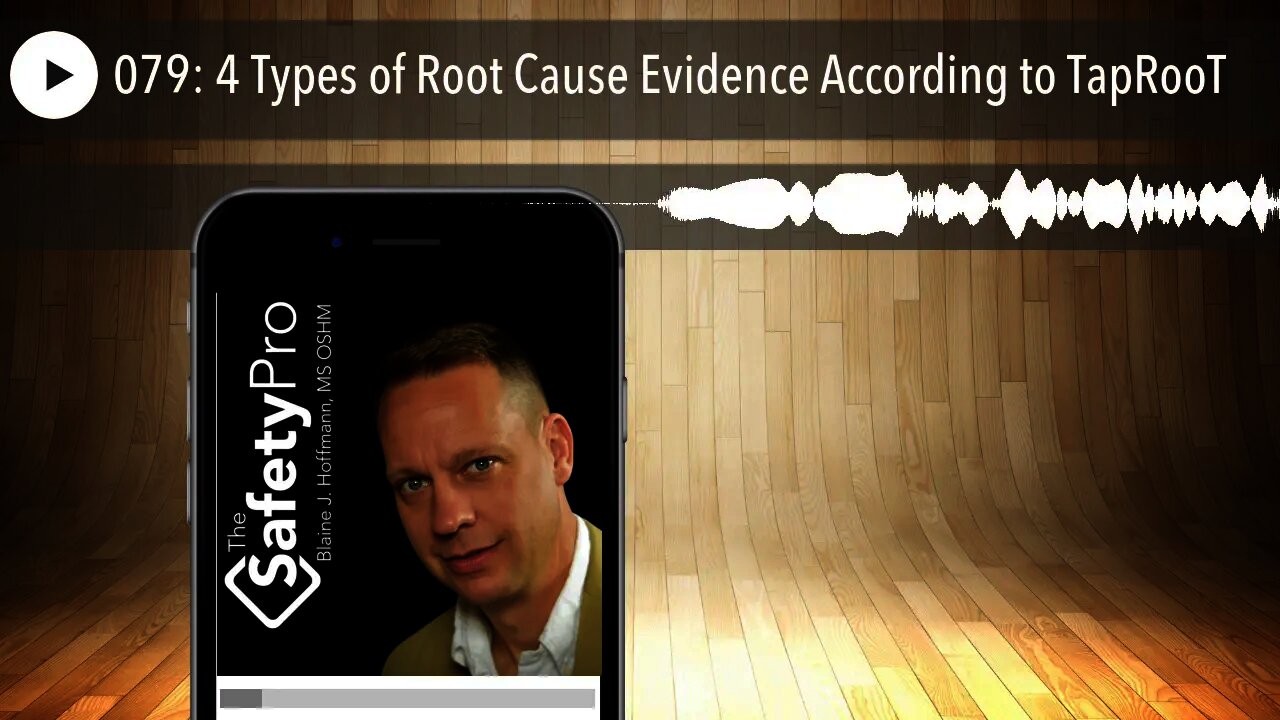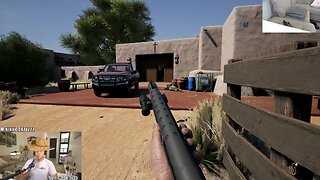Premium Only Content

079: 4 Types of Root Cause Evidence According to TapRooT
Subscribe here:
http://www.thesafetypropodcast.com
Powered by iReportSource
When an incident occurs it is the investigator’s main function to gather all relevant evidence in order to discover root causes and ultimately prevent a recurrence. The tricky part is that evidence isn’t always what it seems. Witnesses accounts can be spotty, inconsistent, they may tell conflicting stories about the same incident, etc. Physical or even environmental conditions can change before the investigation process begins. Paperwork, such as a work instruction or JSA, may be misplaced or even changed in some way. With all of these variables and more, you want to make sure you collect the right types of evidence during your investigation.
I want to share with you some information from TapRooT® , which is a systematic process and training for finding the real root causes and precursor incidents, for not only major accidents but minor mishaps and even near misses. According to TapRooT® , there are four types (or categories) of evidence to be evaluated. TapRooT® calls these categories 3 Ps and an R. This stands for:
• People evidence
• Paper evidence
• Physical evidence
• Recording evidence
People Evidence
Often, evidence collection starts with people evidence (a witness statement), and that evidence guides the investigator to collect paper, physical and recording evidence.
Examples of people evidence include:
• Interviews
• Fatigue-related information
• Evidence of injuries, including cuts and scrapes, bruises, fractures, or sprains
• Information about medical conditions that may have influenced performance (refer to HR or corporate counsel for guidance on HIPPA)
Where do you begin? First, determine who was involved. This includes those who planned the work, supervised the work and performed the work. Other considerations include a worker’s capability, capacity, training, and qualification to perform his or her role.
Inquire into the background of those involved. Determine if they have been involved in any previous incidents or if they have any related performance or conduct issues. Find out if those involved had any work restrictions such as an impairment, physical capability, or lapsed accreditation.
Understand how the employees worked together. What were the dynamics of the team including supervision and team performance? Determine the context (such as environmental conditions, distractions or perspectives).
Paper Evidence
Paper evidence may include all sorts of things including:
• Regulatory paperwork
• Activity-specific paperwork
• Personnel paperwork
• Policy and procedure paperwork
• Equipment manuals
What do you think the biggest mistake is when it comes to collecting paper evidence… given all of the paper that we have in our workplaces? Collecting too much paper not relevant to the investigation!
You don’t need to collect every piece of paper at your facility. How do you know what you don’t need? By looking at the timeline of events that led to the incident. You need all the paper that supports your timeline of events and supports the facts. If you use TapRooT® , you can easily upload digital copies of this paperwork, and highlight relevant pages in your report to management.
Don’t make the mistake of collecting so much paper that what you need for evidence is somewhere at the bottom of the stack.
Physical Evidence
Physical evidence can range from a very large piece of machinery to a very small tool. It includes hardware and solid material related to the incident. You will gather physical evidence in one of two ways. You will collect it or you will record/document evidence that can’t be collected (for example, it is too large to collect, or it is still in use).
Types of physical evidence to collect:
• Broken equipment/parts
• Residue/debris
• Fluid samples
• Paint samples
• Fiber
• Hair, bloodstains, tissue or other DNA
Types of physical evidence to record/document
Evidence is recorded when it is impossible to collect or when it is still in use by the workforce. Following is a list of possible evidence to collect by recordings:
• Burn marks and flame patterns
• Tracks
• Indentations
• Handprints, Footprints, Fingerprints
• Tools
• Equipment
• Products in use
• Equipment status (fixed, portable or temporary?)
• Lights, noise, and temperature
• Confined space
• Obstructions
• Surface hazards
• Housekeeping
• Clarity of signs and labels
• Instructions
Following are additional pieces of information you may want to collect:
• Failure history
• Modification/change of use
• Operator interface
• Maintenance records
• Installing/commissioning
• Storage/transportation
• Procurement
• Design/fabrication
Recording Evidence
Recording evidence, such as photography and video, should be captured as soon as possible after an incident to preserve the scene in images before it is altered in any way. It provides a d
-
 LIVE
LIVE
The Bubba Army
20 hours agoHogan's Death: Bubba Called it FIRST AGAIN! - Bubba the Love Sponge® Show | 8/22/25
8,705 watching -
 38:40
38:40
ZeeeMedia
15 hours agoMax Pace’s Crypto Revolution Story: Four Strategies to Win | Daily Pulse Ep 93
16.2K14 -
 2:16:46
2:16:46
"What Is Money?" Show
2 days agoBitcoin vs War, Violence, & Corruption w/ Gary Mahmoud
11K -
 28:33
28:33
DeVory Darkins
1 day ago $9.36 earnedNewsom suffers stunning EMBARRASSMENT as MAJOR retailer makes devastating announcement
21.3K59 -
 32:46
32:46
Coin Stories with Natalie Brunell
2 days agoInside Look at Strategy’s $70+ Billion Bitcoin Treasury
13.1K1 -
 8:21
8:21
MattMorseTV
16 hours ago $8.11 earnedTrump just SCORED a $500,000,000 LEGAL WIN.
113K43 -
 2:11:05
2:11:05
Side Scrollers Podcast
20 hours agoDISASTROUS Cracker Barrel Rebrand + Destiny PDF Allegations + More | Side Scrollers Live
69.6K27 -
 18:57
18:57
Nikko Ortiz
18 hours agoTexas Stand Your Ground Law
20K5 -
 18:55
18:55
GritsGG
12 hours agoFastest Killing Warzone SMG!
12.6K -
 LIVE
LIVE
Lofi Girl
2 years agoSynthwave Radio 🌌 - beats to chill/game to
381 watching